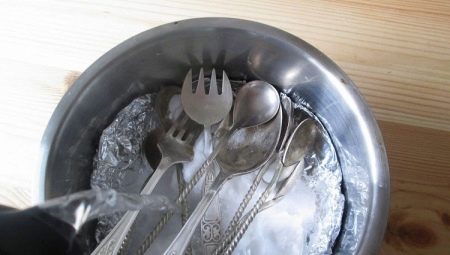Cutlery is an integral part of any kitchen and any table. They differ from each other by the material of manufacture, size and texture. But they have one common property, namely the need for regular cleaning. And this is not just about classic dishwashing, but about the special processing of devices from plaque and complex contaminants. We will talk about how to properly clean cutlery made of various materials and how to care for them in this article.


Used tools
Forks, spoons and knives made of any materials are not enough to just regularly wash in warm water with a detergent. In some situations, it is necessary to carry out their general cleaning - to wash out the embossments, to clean the surface between the teeth and incisors. And not always for these purposes you can use ordinary abrasive cleaning agents. And in some cases, their use is generally prohibited.
The specific set of tools and materials needed for use during general cleaning depends on the type of contaminants that must be dealt with.
- From old fat standard detergents - dry mustard powder, salt and lemon juice - help a lot.
- Get rid of blacknessdue to prolonged improper storage of devices, toothpaste, soda, tooth powder or special products, such as "White", can help.
- Tea plaque with appliances they will remove salt, soda or even just ordinary foil used by housewives in the preparation of various dishes.
- Rust stains easily removed with special chemical cleaners and onion juice.Tooth and mustard powder also does a good job of them.
- Old tea stains removed with soda, lemon juice, mustard and tablets of coal or chalk.
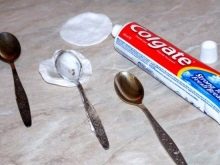

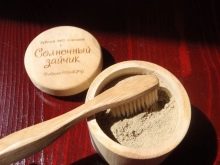
When choosing a cleaning agent, Be sure to consider the material for the manufacture of cutlery. In some cases, certain substances are unacceptable to use - maybe they will help to cope with spots, but will cause other defects on the surface of the devices.
For example, scratches, abrasion of the gilded layer and the complete elimination of gloss.
In addition to the above, can be used and such as wood ash, ammonia, soda ash, juice and pulp from potatoes. It is also necessary to prepare in advance:
- gloves to protect hand skin;
- 2 containers with warm water - one for soaking dishes, the second for rinsing;
- sponges (soft and metallic);
- foil;
- a toothbrush for hard to reach places;
- paper napkins;
- clean flannel small towels.
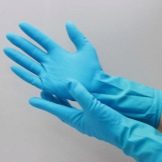
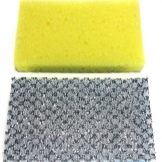
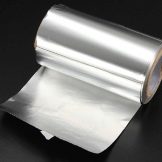

Only when all the necessary materials and tools are ready, you can begin the immediate procedure for cleaning cutlery.
Features of cleaning different metals
Having decided on the general cleaning of cutlery at home, you should know in advance exactly what material or alloy they are made of. The fact is that for each metal it is necessary to use separate means for removing stains of various kinds. Otherwise, instead of shiny and crystal clear appliances, you can get forks, knives and spoons that are very dark and unsuitable for further use.
Silver
From ancient times, silver kitchen utensils have been considered aristocratic dishes. It should be understood that this metal itself is quite soft, therefore For cleaning, using some potent means is not recommended. It should also be remembered that silver cutlery can be of two types, and they should be cleaned in different ways.
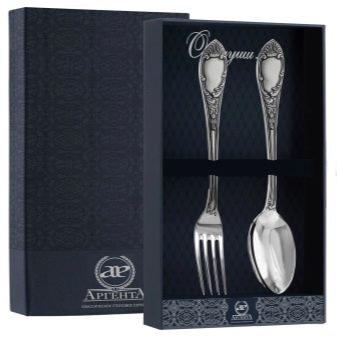
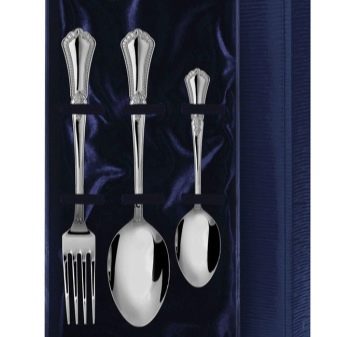
Blackened silver
Dishes made from it are not only quite dark in color, but also often heavier in weight. You can clean it with an ecological folk remedy.
To do this, raw peeled potatoes are cut into slices and put in cold water. Cutlery, previously washed in clean warm water, is also placed in the container. Leave for one hour, after which the silverware is washed in warm running water and wiped dry.
If the devices have dark spots, they are first rubbed with an ordinary stationery eraser, then all products are lubricated with gel - dishwashing detergent and baking soda 1: 1. Leave on for 15 minutes, then washed in warm water.
If single spots remain on the surface, they are rubbed with ammonia and then washed with water again.

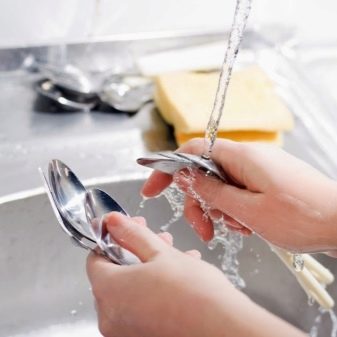
Plain silver
Cutlery made from this material can be cleaned in the following ways.
- Tea plaque is removed with wet, fine salt. The rough side of the kitchen sponge is sprinkled with salt, rubbed appliances, and then washed in plain water.
- Finely ground and sifted wood ash applied to wet dishes and rubbed into it with your fingertips. Then it is laid aside for half an hour, and then washed in a large amount of running water.
- Dark spots are easily washed in an acidic environment. To do this, add 1 tablespoon of 12% vinegar or a couple of tablespoons of lemon juice to a liter of water, dip the devices into the solution for 15 minutes. Particularly dark places are additionally rubbed by hands, and then simply washed.
- Even the most old fat from hard-to-reach places is perfectly removed with a mixture of mustard powder and baking soda (2: 1 ratio). They are applied to wet dishes, left for 10 minutes, and then rubbed with an ordinary sponge and washed in water. Such a cleaning not only removes stains, but also returns shine.

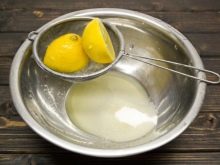
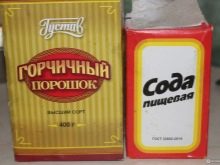
If all of the above tools were powerless, you can either take the cutlery to special workshops where they will be put in order for a nominal fee, or use ready-made pastes and mixtures for cleaning silver and jewelry from it.
Cupronickel
A distinctive feature of spoons, forks and knives made of this material is their great weight and beautiful, one might even say, rich appearance. The main problem of such dishes is their fast and intense darkening. Clean cupronickel cutlery as follows.
- Dark plaque emerging from acidic foods, long-term storage, or tea is easily removed with dry ground coffee or chalk powder. A sufficient amount of the product is applied on a slightly damp surface, rubbed and then washed well in cool water.
- Potato broth helps to remove any kind of contaminants except old fat. To do this, put the dishes in it and cook over low heat for 5-7 minutes at the boil, then cool in the same container and wash first with hot and then cold water.
- Old fat and stains easily eliminated with a mixture of ammonia and ordinary or soda ash. These products are mixed so as to obtain a thick and uniform paste. It is applied in a thick layer, left for 25 minutes, and then the devices are washed in warm water.
- Remove Dark Plaque activated carbon also helps. For this, the tablets are ground into powder and poured into the right place. A few drops of ordinary water are dripped from above.
When the hissing process stops, the appliances rub their hands for several minutes, and then simply rinse.
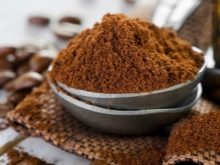
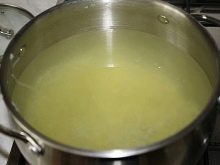
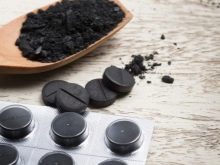
You can remove all types of contaminants with a special paste designed for cleaning silver and cupronickel products. It is used only according to the instructions. It is important to remember that cleaning cupronickel cutlery with any means containing chlorine is prohibited.
Stainless steel
Such cutlery appeared in the USSR and today they are in almost every home. The easiest way to wash them is to use industrial tool "White". In this case, it will be possible to get rid of not only any stains, but also to produce a powerful disinfection.
For this, the product is diluted according to the instructions on the bottle in hot water. Instruments are placed in it and left until the temperature reaches the mark of 35 degrees. Then the spoons, forks and knives are taken out, thoroughly wiped with a sponge and washed well in hot and then in cold water. The specific smell from the product disappears quite quickly.


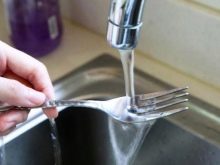
If you do not want to use chemical agents, then you can use the following method.
- Pour 2 liters of water into the pan and add 100 g of ordinary salt and 60 g of baking soda to it. First, it is necessary to lay the foil folded in several layers at the bottom.
- Put the container on fire, and when its temperature exceeds 40 degrees, lower contaminated cutlery into the water.
- Bring to a boil and boil for 10 minutes under a tightly closed lid.
- Remove the pan from the heat and, without opening it, leave until the water has completely cooled.
- Remove cutlery and especially contaminated areas with a toothbrush. Rinse dishes in clean water and store.
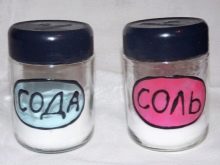
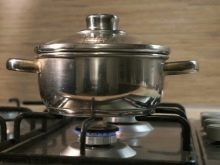
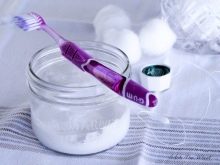
This cleaning option is not suitable for stainless steel cookware if there are wood, stone or bone inserts on its surface. They can change their color and lose their radiance.
Gilding
These forks, knives and spoons are considered festive and, as a rule, get to the table only in special cases. Therefore, during storage, they may fade, and stains and spots appear on their surface. You can get rid of them in the following ways.
- Moisten a cotton pad in good quality pure medical alcohol and thoroughly wipe the devices from all sides. There is no need to rinse them with water after treatment.
- Fresh egg white whipped into a high foam with a thin brush is spotted on the dirt.Leave for 10 minutes, then wipe with a sponge to wash dishes, rinse with water and choose dry.
- Turpentine helps to cope even with the most old pollution. To do this, it is applied with a cotton pad to the device and incubated for a quarter of an hour.
Residues are removed from the surface with a soft cloth, and dishes are washed in warm water, without cleaning agents.
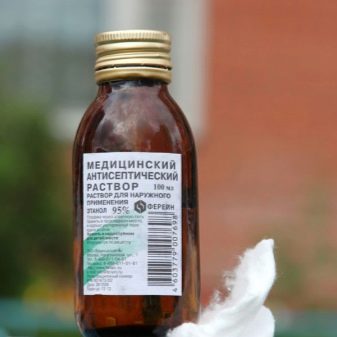

Experts say that Wine vinegar helps to cope with pollution. But it must be natural. It is used in the same way as turpentine.
Aluminum
Such cutlery is rare today. They are short-lived and easily deformed. However, if there are precisely such in the economy, then they can be put in order.
- Boiling for 30 minutes after boiling in a solution (water - 5 l, soda ash - 100 g, clerical glue - 100 ml) allows you to remove any kind of dirt. The devices are allowed to cool in a container, and then thoroughly washed with water.
- Forks, knives and spoons are poured with an acid solution for half an hour, then they are wiped with a sponge and washed in boiling water. Fermented milk products, brine, acidified with vinegar or lemon juice can serve as a solution.
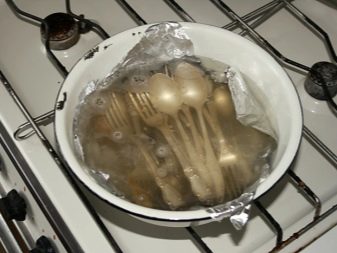
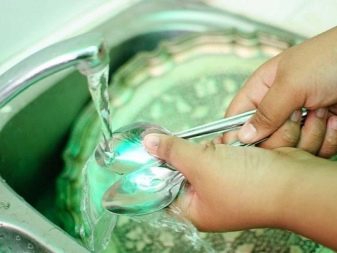
In principle, at home, you can easily clean cutlery from any materials efficiently and quickly. The main thing is to choose the right remedy and strictly follow the recommendations.
Polishing
The polishing step is final when cleaning this type of kitchen utensil. It helps restore glitter, radiance and the original factory look to appliances.
All that is needed is to take a clean small piece of woolen cloth and wipe the device from all sides with circular movements. After 1-3 minutes, it will become clear that the knives, forks and spoons have regained their original form.


Storage rules
You can save the result for a long time, but only if the following rules are met.
- Gold-plated appliances are stored in special containers with lids, the bottom of which is lined with velvet. The containers with utensils themselves should be cleaned in a dark place.
- Silverware is individually wrapped in a special soft paper, then, if necessary, each product is stacked on top of each other and placed in cardboard boxes. It is important to remember that if the devices are tied together with a thread, a strip will appear on them in any case. Therefore, this is not worth doing.
- Products made of aluminum and stainless steel do not need any special storage conditions. The main thing is to protect them from excessive moisture and exposure to too high temperatures.
- Cupronickel cutlery is stored in a soft cotton cloth, in a dark and cool place and separately from dishes made from other alloys.

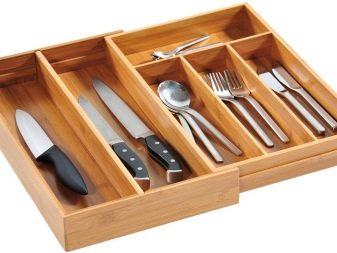
These rules will help restore cleanliness and shine to cutlery and keep them for a long time.
For how to clean cutlery at home, see the next video.
